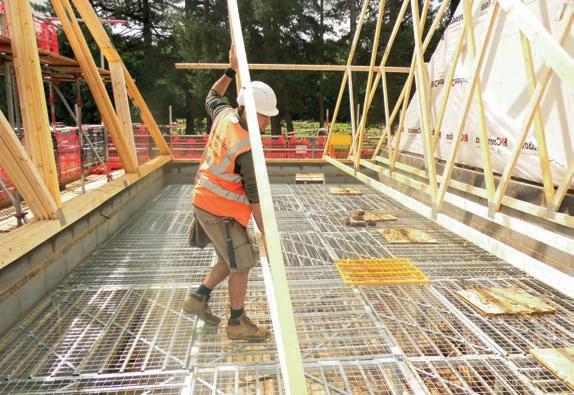
2 minute read
Dropped objects
from AccessPoint Issue 01
by AccessPoint
• Store required equipment and tools securely
• Stagger ladder hatches
• Install protection fans
• Build a pavement gantry
• Create exclusion zones with barriers and safety signs
• Tether tools and equipment
• Prevent ‘hemping’ of long tube
HSE statistics for the 2010–2015 period have identified that 10 per cent of construction RIDDOR reportable injuries were as a result of being struck by dropped or moving objects. This data has to be interpreted with care because it is well known that non-fatal injuries are significantly under-reported.
A dropped object is any item or object that falls, or has the potential to fall, from its position. Dropped objects fall into two categories: Static Dropped Objects and Dynamic Dropped Objects.
A Static Dropped Object is an object that falls from its position under its own weight, such as an inadequately secured fitting. Whereas a Dynamic Dropped Object is one that falls from its position due to applied force, such as severe weather.
A number of factors can contribute to a dropped object incident. These include:
• Inadequate risk assessment
• Human factors
• Inadequate work processes
• Failed fixtures and fittings
• Poor housekeeping
• Inadequate inspection and maintenance
• Environmental factors
Dropped objects are a fundamental hazard of working at height, and there should be a clear system in place to identify, prevent and manage the associated risks. Policies should detail the appropriate inspection and control mechanisms that are implemented to identify, assess, eliminate or manage the risks from dropped objects. Preventative and mitigating controls should be detailed within safe systems of work and method statements.
The risks associated with potential dropped objects should be reduced to the lowest reasonably practicable level in line with the hierarchy of controls. Effective task planning and risk assessment will eliminate, reduce, isolate and control hazards.
In the first instance, potential dropped objects should be eliminated at source with the following actions:
• Remove any unnecessary equipment and tools
• Mechanise lifting equipment where possible
• Stop work during adverse weather conditions
• Install toe boards
• Use solid barriers and brick guards to close any open edges
• Install board gap fillers
• Close ladder hatches
Where potential dropped objects cannot be completely eliminated, it is important to assess the likelihood of a potential fall and determine the severity of the consequence. From this, the following measures can be devised and put into place to reduce the distance of fall and prevent personal injury:
• Ensure all operatives are competent to work at height
• Regularly undertake dropped object Toolbox Talks and safety meetings
Although having a robust management system in place is the primary tool in preventing dropped objects, there is a fundamental requirement for all personnel on-site to remain vigilant of the associated hazards, by:
• Being aware of the hazard and associated risks, and being prepared to stop work if the conditions or actions are unsafe
• Recording and reporting all incidents
• Removing potential dropped object hazards
• Controlling tools and equipment which have the potential to become a dropped object hazard
• Designing the work environment and selecting suitable tools and equipment which mitigate the risk of potential dropped objects
• Undertaking regular worksite inspections
This article details just some of the important considerations and solutions when preventing dropped objects. However, it is not exhaustive and should always be supplemented with additional checks and processes specific to the individual location, task and environment.
John Steven Simons
JS Safety Associates www.jssafetyassociates.com






